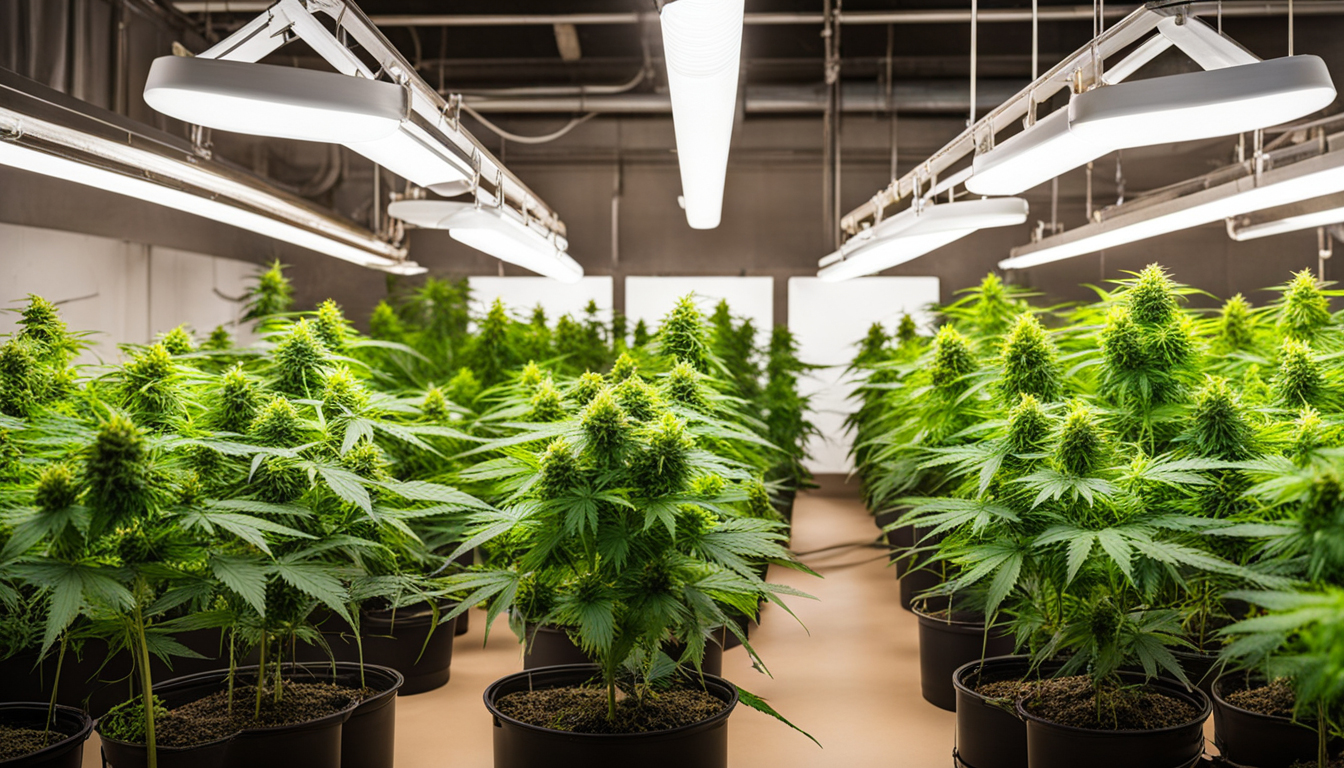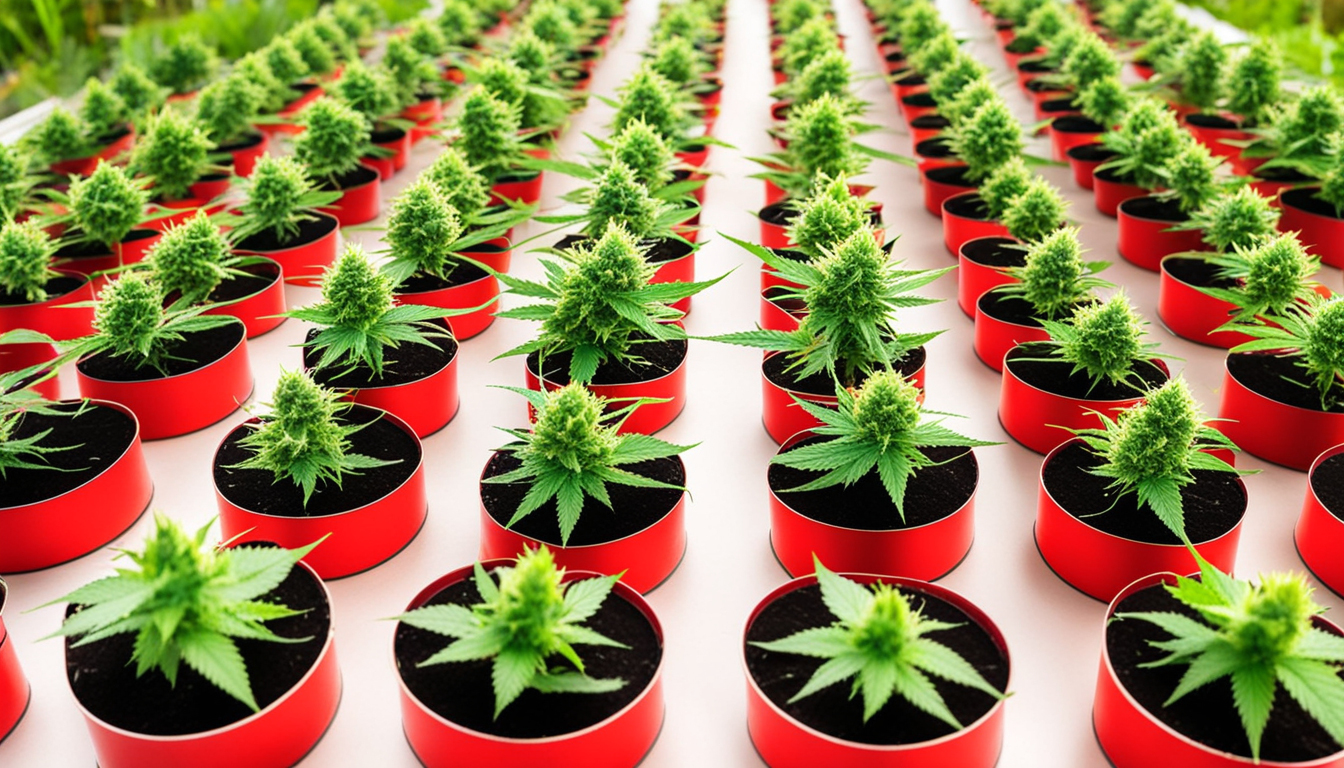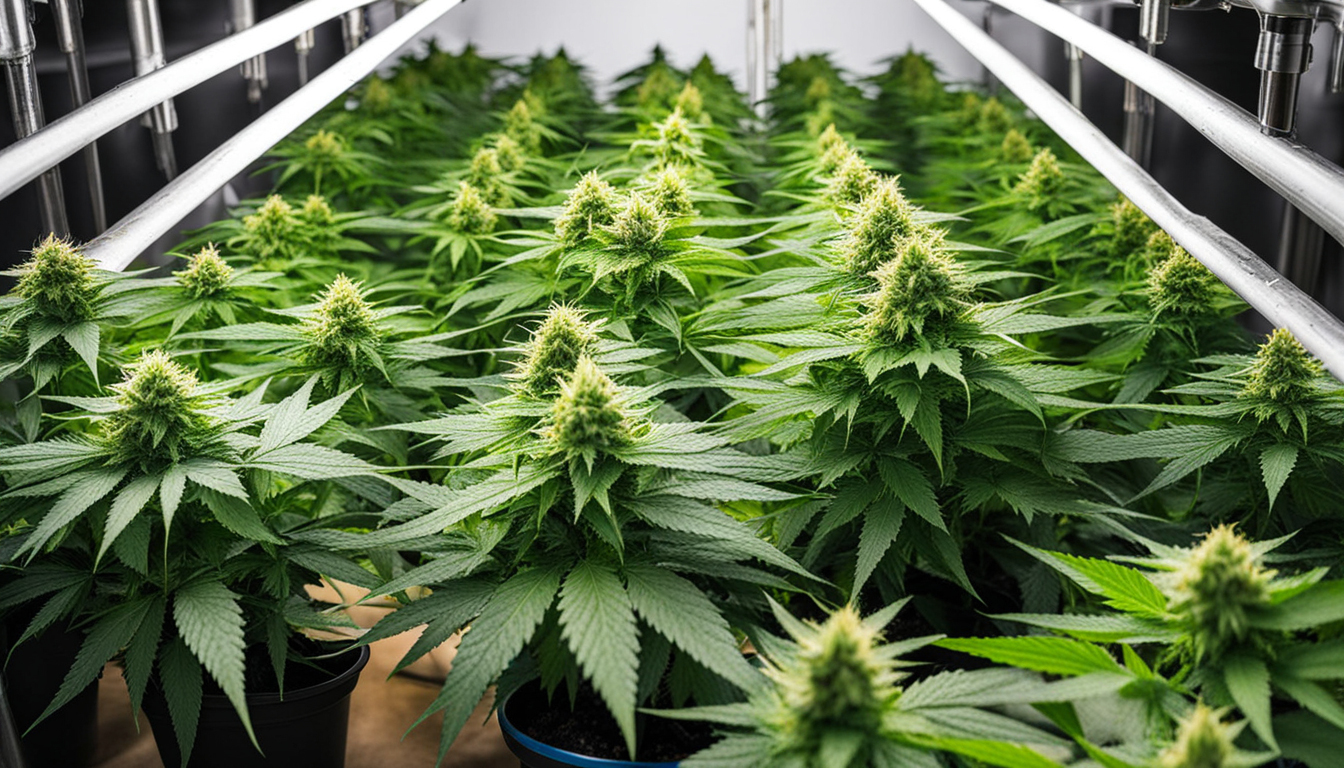
Whether you're beginning cannabis growing or looking to improve your existing harvest, following this complete guide will help you produce bountiful, high-quality yields right at home. With the right equipment, methods, and attention, cultivating cannabis indoors can be an extremely satisfying and cost-effective endeavor.
Choosing Marijuana Varieties
The first step in planning your indoor harvest is choosing the right cannabis varieties to grow. The three main types of marijuana plants each have their own qualities.
Energizing strains
Known for their energizing cerebral effects, sativas spread tall and slender with narrow leaves. They flourish in tropical equatorial climates and have a longer flowering time between 10-12 weeks indoors. Top sativa strains include Jack Herer, Durban Poison, Super Lemon Haze, and Jack Herer.
Indicas
Indicas provide relaxing full-body effects and spread short and bushy with wide leaves. Accustomed to colder mountain climates, they bloom faster within 2-2.25 months. Popular relaxing varieties include Northern Lights, Bubba Kush, and Bubba Kush.
Mixed strains
Mixed varieties mix traits from both sativas and indicas. They offer combined effects and have moderate blooming times around 2.25-2.5 months. Popular mixes are OG Kush, Girl Scout Cookies, and Blue Dream.

Setting Up Your Grow Space
Weed plants need the right controlled environment to flourish. Key factors for indoor grows are lights, airflow, layout, and finding the ideal discreet spot.
Location
Choose an empty space with quick access to water and electrical outlets. An empty spare room, large closet, corner of the basement, or grow tent locked away in a garage all make great discreet cultivation room spots.
Lighting
Weed requires intense light for all vegetative stages. LEDs are energy-efficient and come in full spectrum options replicating real outdoor light. Cover 250-400 watts per sq. ft for the growth stage and 20-40 watts per square foot for bloom.
Airflow
Proper ventilation and exhaust systems maintain ideal temperature, humidity, and pure CO2 levels. Set up quiet 10-15 cm blowers or carbon filters to refresh old air and eliminate odors.
Layout
Optimize your space by arranging plants strategically under the lamps and leaving room to access and work around them. Set up distinct zones for growth, bloom, curing, and cloning.

Growing Substrates
Cannabis can be cultivated in different substrates, each with pros and cons. Pick a appropriate option for your specific setup and cultivation style.
Soil
The classic substrate, soil is affordable and simple for beginners. It provides great taste but requires more watering and nutrients to nourish plants. Enrich soil with perlite or coir to enhance drainage.
Coconut coir
Made from coconut husks, renewable coco coir holds water but still allows air to the roots. It's more sterile and more consistent than soil. Use coco-specific fertilizers to avoid accumulation.
Water systems
In hydro systems, plant roots develop directly in fertilizer water solution. This enables rapid growth but needs careful observation of water properties. Deep water culture and irrigation systems are popular techniques.
Germinating Seeds
Sprouting activates your marijuana seeds to start sprouting radicles. This readies them for planting into their cultivation medium.
Towel Method
Place seeds between wet paper towels and maintain them damp. Check after 2-7 days for growing taproots indicating sprouting is complete.
Planting directly
Plant seeds directly into wetted cultivation medium 1⁄4 inch deep. Gently water and wait 7-14 days until seedlings push through the surface.
Cubic rockwool
Presoak rockwool cubes in pH-adjusted water. Insert seeds 6mm deep into the cubes. Keep cubes wet until sprouts emerge within 1-14 days.
Repotting Young plants
Once sprouted, weed seedlings need to be repotted to prevent overcrowding. Move them into appropriately sized containers.
Ready Containers
Load large pots with growing medium enriched with time-released fertilizer. Let containers to soak up water overnight before transplanting.
Carefully Transplanting
Carefully loosen young roots from germination medium using a spoon. Put into pre-soaked pot at same depth as before and lightly water in.
Vegetative Stage
The growth stage encourages leafy growth and plant structure through 18-24 hours of continual lighting intensity. This stage usually lasts 4-8 weeks.
Providing 18-24 Hours of Light
Use grow lights on a 24 hour schedule or Send a Message outdoor light to initiate nonstop photosynthesis. Light intensity influences size and node distance.
Nutrients
Use vegetative stage nutrients higher in nitrogen. Make sure pH stays around 6.5 for proper nutrient uptake. Fertilize 25-50% concentration after 14 days and increase gradually.
Training Techniques
Topping, low stress training, and scrogging manipulate growth shapes for flat foliage. This boosts yields.

Flowering Stage
The flowering stage grows buds as plants reveal their sex under a 12 hour light schedule. It lasts 8-12 weeks based on variety.
Switching to 12/12
Switch grow lights to 12 hours on, 12 hours off or place outdoors for natural 12 hour cycle. This triggers plants to start flowering.
Stop Fertilizing
Leaching flushes out fertilizer residuals to improve taste. Feed lightly the first weeks then just use plain water the final 2 weeks.
Flushing
Maintain 12 hour photoperiod but flush using pH-balanced water only. Resume plain watering if buds aren't yet ripe Find Out More after two weeks.
Harvesting
Knowing when pot is completely mature delivers peak cannabinoid content and aroma. Harvest plants at peak maturity.
Signs of readiness
Check fading pistils, swelling calyxes, and 10-15% amber trichomes. Inspect buds around the plant as they don't all mature evenly.
Harvesting plants
Use clean, sharp pruning shears to gently cut each plant at the base. Leave 5-10cm of stem attached.
Drying
Suspend whole plants or branches inverted in a dark room with average temperature and RH around 50-60% for 7-14 days.
Aging
Curing keeps desiccating while aging the buds like aged spirits. This process smooths bitterness and further develops cannabinoid contents.
Jars and Humidity
Manicure cured buds from stems and store into glass jars, filling about 75% capacity. Use a hygrometer to monitor jar humidity.
Opening jars daily
Open containers for a short time daily to gradually reduce humidity. Rehydrate buds if humidity goes under 55%.
Final Cure
After 14-21 days when moisture stabilizes around 55-60%, perform a last trim and keep long-term in sealed jars.
Troubleshooting
Even experienced cultivators run into various pot Send a Message plant problems. Identify problems early and fix them properly to keep a strong garden.
Poor feeding
Chlorosis often indicate inadequate nitrogen. Purpling stems and leaves signal phosphorus deficiency. Test pH and increase fertilizers gradually.
Bugs
Spider mites, fungus gnats, mites, and root aphids are frequent weed pests. Use organic sprays, ladybugs, and yellow traps for natural control.
Powdery mildew
High moisture encourages botrytis and root rot. Improve circulation and circulation while reducing humidity under 50% during flowering.

Summary
With this complete indoor cannabis cultivation guide, you now have the info to cultivate bountiful potent buds for personal grows. Apply these steps and techniques during the germination, growth, and flowering stages. Invest in good gear and closely monitor your plants. In time, you'll be rewarded with sticky fragrant buds you raised yourself under the loving care of your green hands. Good luck cultivating!